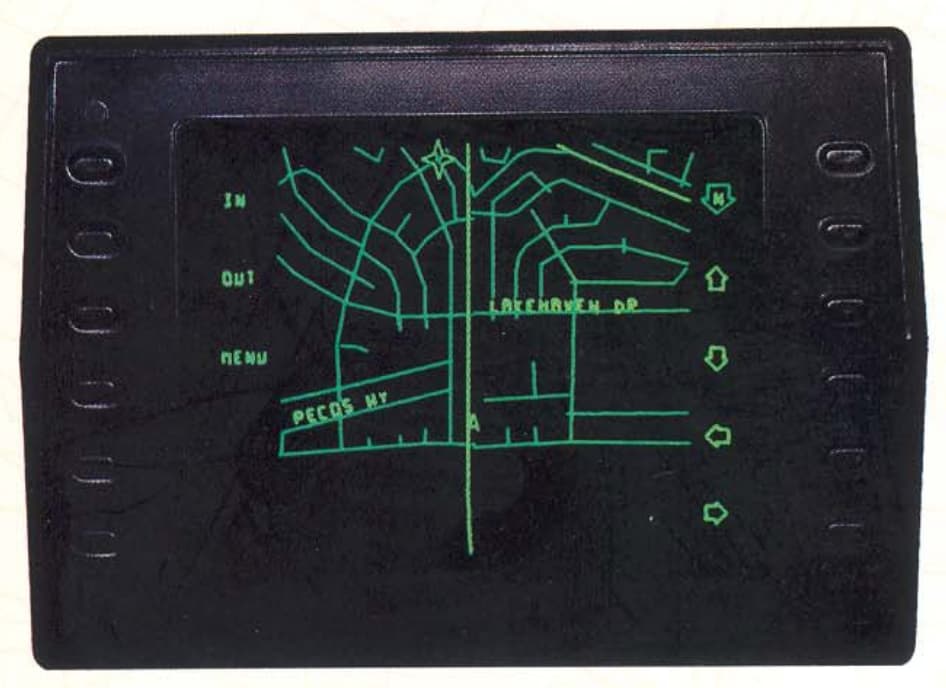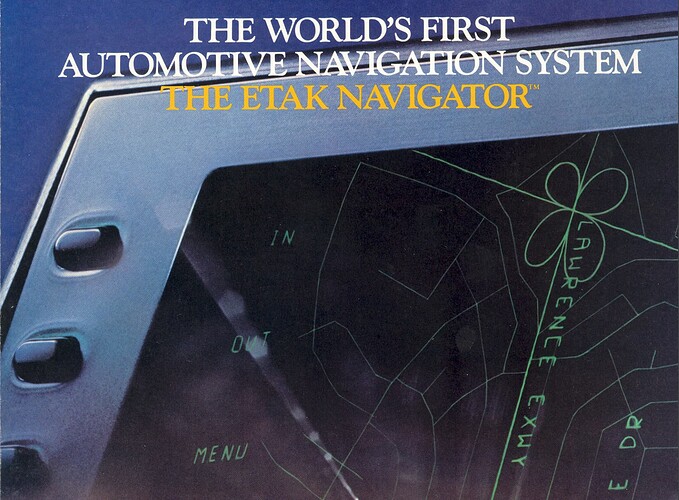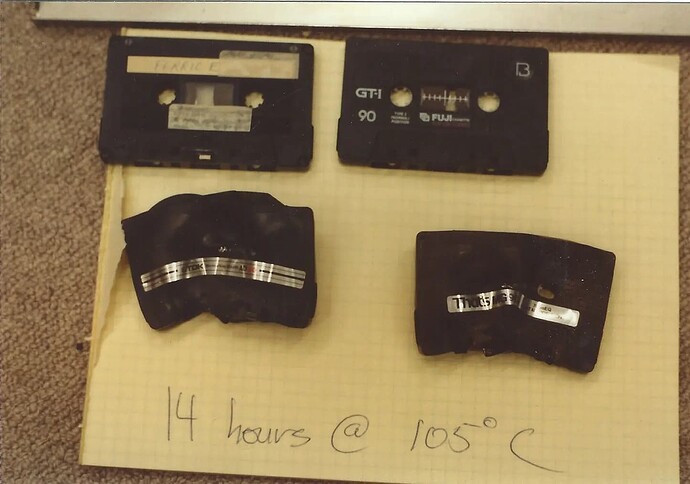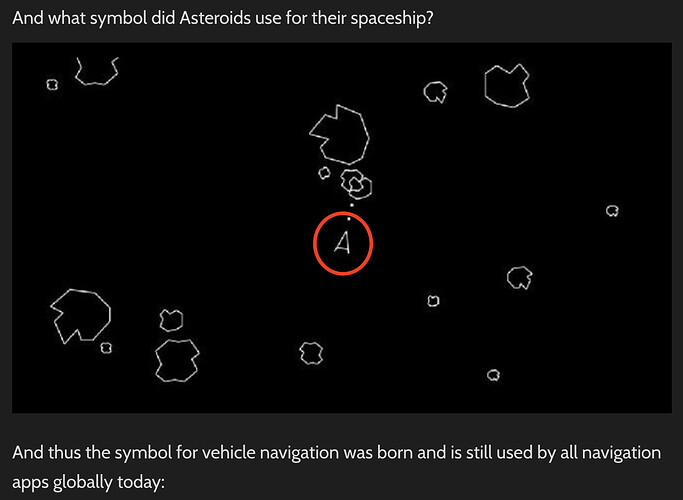Worth reading the story of this system, as it’s as much about the ideas and data preparation as about the in-car compute. (They ran multiple map digitisation stations full time, with three weekday shifts and a weekend shift.)
Here’s the recent telling at Map Happenings:
A Curious Phenomenon Called ‘Etak’
The entire map production program was developed and ran on a single VAX minicomputer. This blazing machine had 2MB RAM and two 400MB hard drives. It cost about US$120,000 in today’s dollars.
You edited code using the ‘vi’ editor. Sometimes you waited an hour for your programs to compile.
The jobs to process the map data took up to two weeks to run … which was longer the the mean time between failure for the VAX mini-computer.
which draws on and references Benj Edwards 2015 writeup
Who Needs GPS? The Forgotten Story of Etak’s Amazing 1985 Car Navigation System
A map of the Bay Area stretched across six tapes.
What caught my eye is the use of Compact Cassette with a precision hub drive to store 3.5Mbyte with 10s access time. (Run at 80 inches/sec - 40x speed!) But I see in this 1985 paper it says “Specially manufactured cassettes, similar to audio cassettes, are used for map data and program storage” (Edit: another technical document, linked in this collection, says "A cassette stores 3.5 MBytes and reads data at 200 kilobits per second. Each cassette covers an area comparable to that covered by two typical paper street maps. ")
Here’s a demo of the system in car, home video quality, 1991:
The $3,495 system used “augmented dead reckoning” to navigate, using sensors on two of the vehicle’s road wheels to measure distance and turning rates in conjunction with a solid-state compass and while constantly comparing the predicted position with data from tape-based maps.
I found this used system for sale in Los Angeles in 1991, and with tinkering and some long-distance assistance from Etak, Inc., installed it in one of our vehicles. This system uses Philips-cassette data tapes - unlike the audio tape players using the same tape and shell, there is no capstan drive, and the tapes are spindle-driven at much higher speeds.
Only a few thousand Navigators were ever produced. A number of them were used in Los Angeles Fire Department vehicles - this may have been one of those systems.
From the Etak Innovations paper (annotated for signs of Bosch’s use of Etak’s ideas):
Etak continued to work on its path finding and directions after the launch of the Etak Navigator™ and the TravelPilot. In fact, Etak was under a contractual obligation to deliver to Bosch a working demonstration of its routing by 1988 and did so. Etak first adapted a Sun Sparc so it could operate in the trunk of a car which was used to demonstrate real-time routing. This was followed by porting its routing technology to work on a TravelPilot with extended memory (1MB instead of 500kB). Etak also demonstrated routing within its latest navigation system called the Etak NAV IV.
As Etak was working on these developments, Bosch was struggling with its own routing problems. For the best path algorithm, Bosch was using Bellman, Ford and Moore while Etak was using Moore/ Dijkstra.
Nolan Bushnell, post-Atari, was involved…
About the name:
That “heading-up” technique reminded Honey of ancient Polynesian navigation concepts that he had read about during his studies of navigation in previous years. The ancient mariners of that region navigated the seas by relying on a series of environmental cues, such as the positions of islands around them, combined with a mental perception of themselves in the center of the conceptual navigational space in their heads. With that in mind, Honey decided to call his new company Etak, which is a Polynesian term for moving navigational reference points.
via HN discussion here




